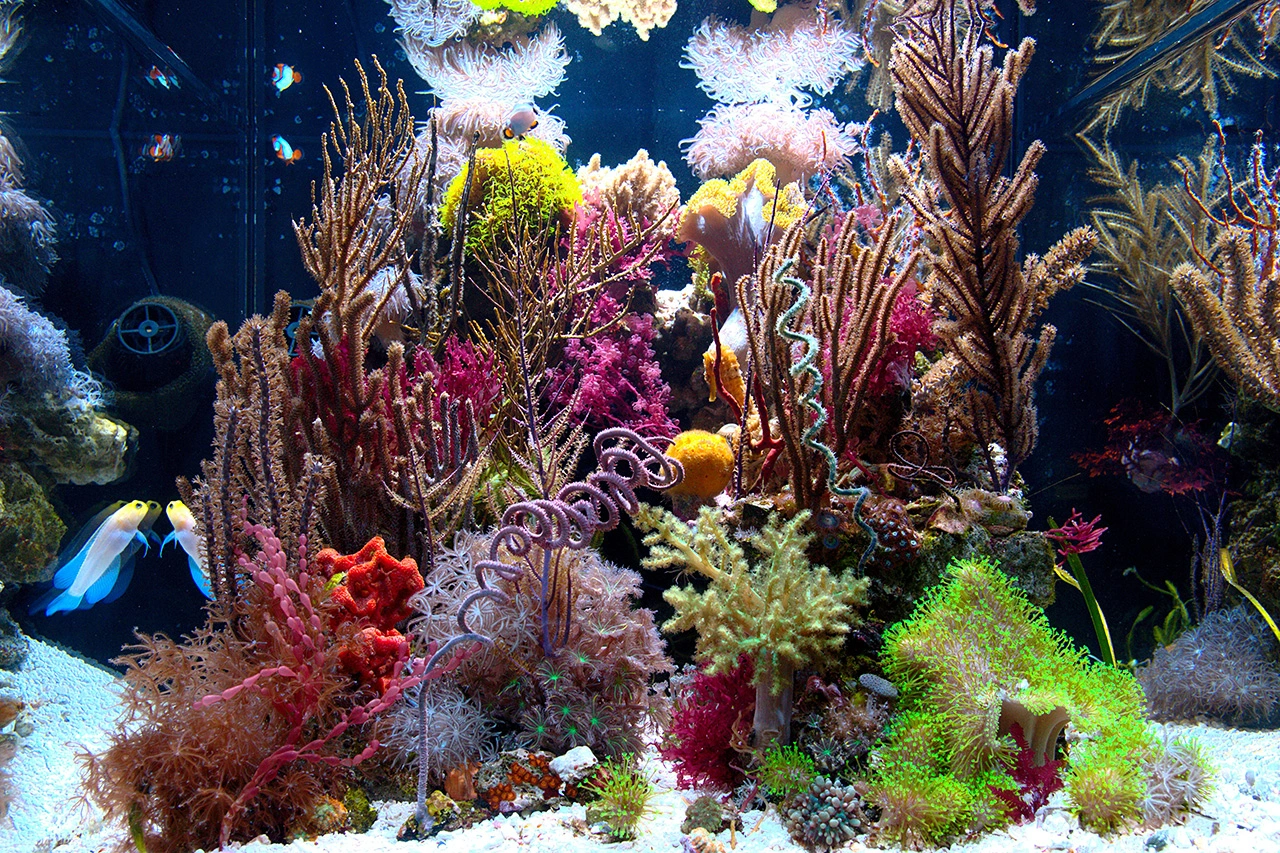Stunning 50-Gallon Reef Tank – ziareefer's TOTM | NanoReef

Tank Specifications
Volume: 50 Gallons / 189 Liters
Dimensions (L × W × H):
24.0" ×
24.0" ×
20.0"
61.0cm ×
61.0cm ×
51.0cm
Equipment List
- Salt: Red Sea
Frequently Asked Questions
What equipment do I need for a successful reef tank?
A successful reef tank setup includes essential equipment such as: 1. **Lighting**: High-quality LED lights (e.g., EcoTech Radion XR30w) for coral growth. 2. **Filtration**: A sump with filter socks, activated carbon, and GFO reactors. 3. **Skimmer**: An efficient protein skimmer (like the ASM G-2) to remove organic waste. 4. **Heater**: A reliable heater to maintain temperature (e.g., Finnex Digital HMO-300). 5. **Circulation**: Wavemakers (such as the Jebao WP25) for water movement. 6. **Aquascaping Materials**: Live rock and appropriate sand for biological filtration.
How often should I perform maintenance on my reef tank?
A regular maintenance routine is crucial to keeping your reef tank healthy. Tasks should include: 1. **Glass Cleaning**: Twice a week to prevent algae buildup. 2. **Filter Socks**: Change weekly to ensure good water clarity. 3. **Pump Maintenance**: Clean skimmer and return pumps with vinegar every 3-4 months. 4. **Water Testing**: Test key parameters (salinity, pH, ammonia, etc.) at least twice a month. 5. **Water Changes**: Perform a 10% water change weekly to maintain water quality.
What is the importance of water parameters in a reef tank?
Water parameters crucially affect the health of your reef tank inhabitants: 1. **Salinity**: Should be maintained at 1.026 for most reef creatures. 2. **Temperature**: Keep between 75°F and 80°F for optimal health. 3. **pH**: Maintain between 7.9 and 8.2 to support coral growth. 4. **Calcium, Alkalinity, and Magnesium**: Critical for coral skeleton formation; maintain calcium at 400-450 ppm, alkalinity at 8.5-9.0 dKH, and magnesium at 1350-1400 ppm. Regular testing and adjusting help prevent stressful conditions for the livestock.
What should I feed my seahorses and how often?
Seahorses require a special feeding regimen due to their unique needs. It is recommended to: 1. **Broadcast Feed**: Use mixed frozen cubes for your reef fish first, allowing them to eat their fill. 2. **Hand Feed**: Turn off filtration and feed seahorses frozen mysis shrimp twice daily, ensuring they get enough to eat without competing with faster fish.
How do I manage nutrient levels in a heavily-fed reef tank?
Nutrient management in a heavy-feeding aquarium can be achieved by: 1. **Biological Filtration**: Relying on live rock and a deep sand bed. 2. **Protein Skimming**: Ensuring your protein skimmer is efficient (consider using one rated for larger volumes). 3. **Macro Algae**: Incorporating macro algae in your display and sump to absorb excess nutrients. 4. **Regular Water Changes**: Conducting weekly changes of at least 10% helps dilute nutrient concentrations.
What do I do if my fish get sick?
Having a well-stocked emergency kit is essential in dealing with fish illnesses. To treat sick fish, ensure you have the following on hand: 1. **Medications**: Such as Focus, PraziPro, and Bio Bandage to target infections. 2. **Quarantine**: Always quarantine new arrivals before introducing them to the main tank to prevent the spread of disease. If a fish shows signs of illness, promptly remove it to the quarantine tank for treatment.
How can I safely clean my protein skimmer?
Cleaning your protein skimmer is vital for maintaining its efficiency. To safely clean it: 1. **Disassemble**: Remove the skimmer cup and neck. 2. **Soak in Vinegar**: Use a vinegar solution to soak the components for several hours to dissolve buildup. 3. **Clean with Brush**: Use a soft brush to scrub away any stubborn residues. 4. **Rinse Thoroughly**: Rinse all parts thoroughly with freshwater to remove any vinegary taste before reassembling.